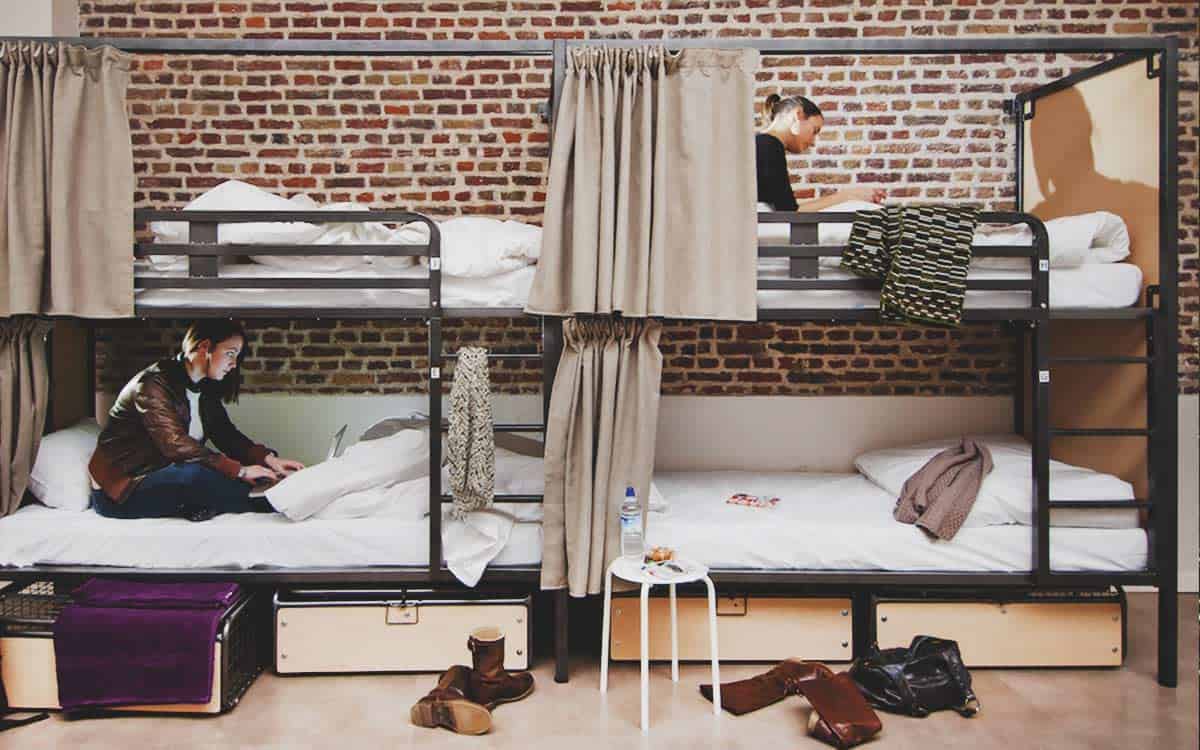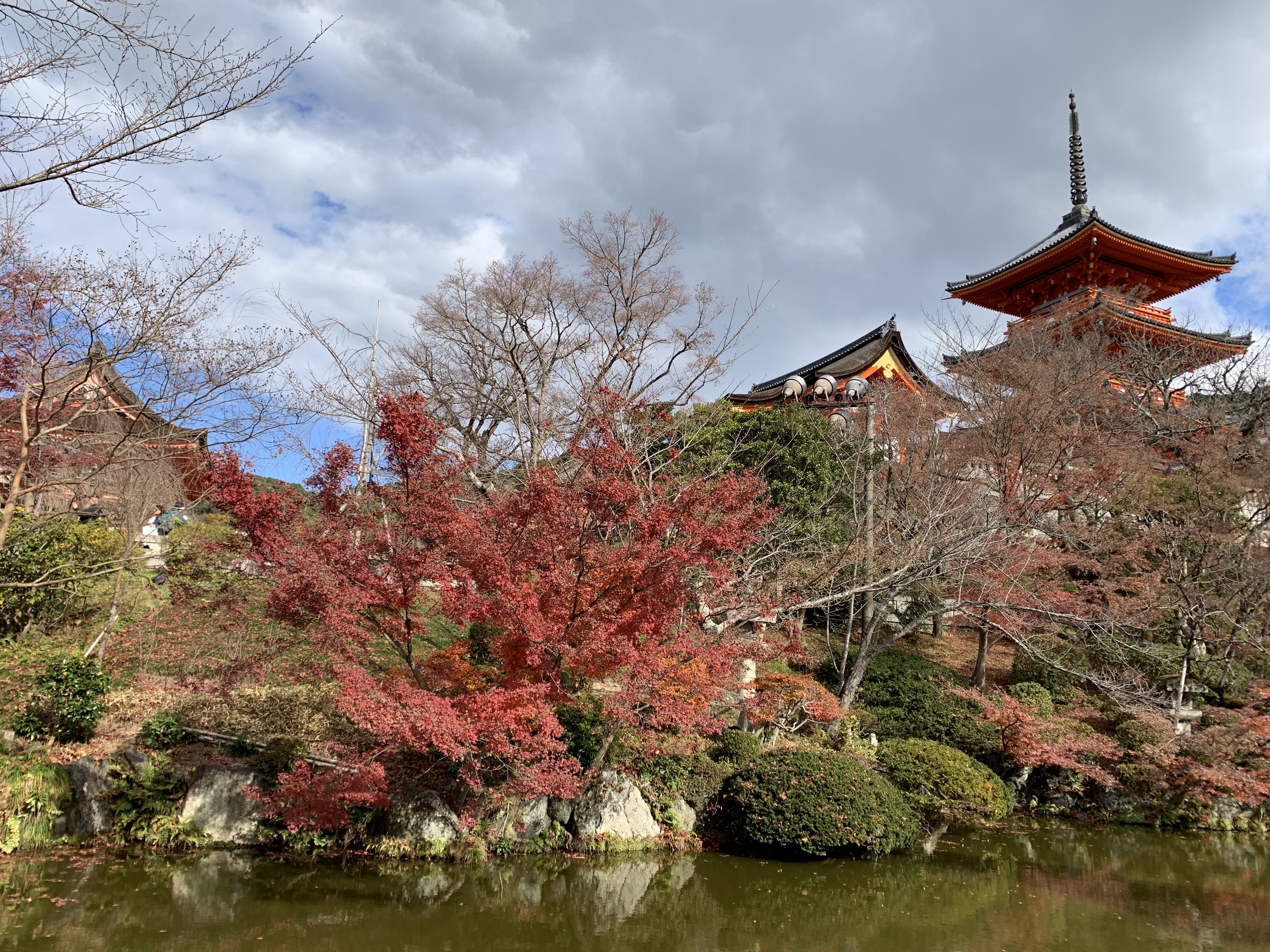Music has been the topic of major discussion over the last twenty years about how it has changed and what effect it is having on many young people.
Benefits of listening to music for young adults
Mar 1, 2020 4:04:33 PM / by Mulvihill, Liam
Today students often favour going on Erasmus to Europe, or on a J1 to the U.S in the summer to experience new areas before entering into the working world. These types of trips can be tricky as it often is difficult to fully adapt to your new surroundings. You aren't the long enough to fully establish roots, yet two or three months (In my case 5 months) can be a long time to spend away from home.
Anyone who has spent some time living in a different area knows how difficult it can be to get used to your new surroundings and get over the struggle that is homesickness. It is a scary thing to move to a new country, with new people, languages, foods etc. Leaving your comfort zone and things you are used to, be it for employment reasons or otherwise, can lead to hard times but it can also be a huge opportunity for personal growth if the challenges are overcome.
In order to reap the benefits of travelling to a new country it is important to first overcome the obstacles which could prevent you from getting the most out of the experience. You can find several articles online with lists of essentials when moving abroad and telling you how to adapt to a new city. In this blog I am going to use personal experiences of both working in France for a summer and studying in Australia for a semester to create my own list of guidelines. I think that different things are more important for different people so this list is not exhaustive, but never the less it’s a good starting point and may spark other ideas.
1. Organise your bedroom
Although this sounds silly, from my experience the best thing to do when you arrive in a new place is to fully unpack and make your bedroom as comfortable and neat as possible. This is coming from somebody who’s bedroom could be excused for a demolition site on any given day, however I believe that the worst thing you can do is live out of a suitcase upon arrival. In order to limit the feeling of being in an alien place, it is important to make your bedroom as familiar to home and a place you’re happy to return to at night-time.
2. Get familiar with the neighbourhood
Once you feel that you are set up at home, I usually like to wander aimlessly around the area and try find my way around without using google maps too much. This is a good way to slow down and take the new area in without having google maps tell you where to go. The more places you find that you like the easier it will be long term to settle in. Stumbling across quiet little restaurants or shops that can become your ‘local’ can particularly help people from smaller areas adapt to big cities.
3. Join a sports team
Everything you need to know about travel accommodations in Europe
Mar 1, 2020 3:48:46 PM / by Peiqi Ma posted in travel in europe
City-hopping & Budget Travelling in Japan
Mar 1, 2020 3:46:59 PM / by Charmaine Song Jye May posted in student travel, Exploring Asia, travel budget, student budget, things to do in japan, japan trip, things to do in tokyo, things to do in osaka, japan travel, student survival, undergraduate, Travel Asia, Solo traveling, Budget travelling, FollowMe, accomodation, transport, unique city guide, budget holidays, traveling
Ever wanted to explore Japan with friends, but want to spend wisely?
Here are some tips and tricks on what you can do to save some of that hard-earned money, while enjoying as much as you can!
Step 1: Book a flight to Japan
Flights to Asia are definitely not the cheapest from Europe, but taking a connecting flight will save you loads! What's even better, is that you get to explore the culture of another country (even though you are just in the airport, you can visit souvenir and duty free shops!)
Bookings can range from €400-600 which is pretty decent for a 19 hour flight! This will take you from Dublin to Tokyo Narita Airport, through London, Doha or Spain and more! It is easy to find the best deals on Skyscanner.ie. Of course there are flights to other cities (like Osaka, Kyoto and more) you can consider landing in as well!
Source: Writer's own, taken in Dotonburi, Osaka, Japan
Step 2: Book accommodation in Japan
You may think capsule hotels in Japan are the most affordable. However you can find private rooms for 2-4 or more on websites like Hotel.com and Hostel World that are better priced than these capsules! Having a personal room is great as well - it provides you with plenty of space and time to do your laundry if you need to! Hand-washing your clothes and undergarments is a good solution as you can save €1 and time from travelling to the laundromat. Having a room compared to a capsule also provides you with more storage space.
FOCUS KURAMAE, €29-32 per night
Source: https://www.agoda.com/en-gb/focus-kuramae/hotel/tokyo-jp.html?cid=-218
However if you would like to experience living in a capsule hotel, Shinjuku Kuyakusho-mae Capsule Hotel is a good place to go! Prices are affordable for males and females, around €20-30 per night and this hotel is also right in the city centre of Tokyo, Shinjuku.
Source: https://www.agoda.com/en-gb/shinjuku-kuyakusho-mae-capsule-hotel/hotel/tokyo-jp.html?cid=-218
Do note that some capsule hotels are only for males, so you would have to do your research before going there - especially if you are female!
Step 3: Transportation & exploration in Japan
Transportation is another factor to take note of. Taking the subway (Tokyo Metro) is definitely one of the most affordable and quickest options.Fares range from 170 to 320 yen (€1.70 to €3.20) depending on where you want to go and the distance between each stop. A one day pass for unlimited use of Tokyo Metro is available for 600 yen (€5). Worry less as the city is very well connected and you can easily get to where you want to! Here is a photo of the subway map and its 179 stations.
Source: https://www.tokyometro.jp/en/subwaymap/
City-hopping: Between Tokyo to Kyoto, Osaka and more
The best way to travel from city to city is by train. To experience the full Japanese culture, you can spend a little more on the Shinkansen (Bullet Train), which could set you back about €100+ for a two hour and 30 minutes ride to Osaka.
Source: https://www.kyotostation.com/the-tokaido-shinkansen/
Tokyo and Osaka are definitely the two main cities to visit in Central Japan if it is your first time there. A Japan Rail Pass is what many student travellers would get, due to cost-savings and convenience. It may send you back on some cash and you can only travel on JR Lines, but if you are planning to travel to more than 3 cities in a week, it is definitely worth it. Check out this post for more.
Free and affordable places of interest around Japan
With the JR Pass, not only can you travel to different cities but access 5 main Tokyo railway lines, which would take you to most places of interest. You can also take a photo with the Tokyo Tower, walk through the colourful Harajuku street and observe the famous Shibuya Crossing for free.
To get a view of the entire Tokyo city, you can go to the Tokyo Metropolitan Government Building Observation Decks. Japan trains are highly efficient and affordable so you can get to any place your want to at a reasonable price.
Source: Writer's own, Kiyomizu-dera, 400yen / €3 entry fee
In Osaka and Kyoto, the JR Pass is also valid for use along most lines. You can proceed to Osaka Castle and walk around the parks outside, where you can get a nice photo with the castle for free. Admission to the castle is around 600 yen or €5, which is very affordable. There are many free and beautiful places to visit in Osaka like:
- Shinsaibashi-Suji Shopping Street
- Dotonburi & Namba, a must-go tourist attraction with its famous neon signs
- Kemasakuranomiya Park, a beautiful park with cherry blossom trees
- Osaka Station City, a major railway station and shipping destination
- Kuromon Market, a street food market with fresh produce and even souvenirs
Attractions in Kyoto are also free or priced very reasonably. The "Instagram famous" Fushimi Inari shrines are a must-visit when you go there. What is even better is that you go in for free! Do remember to respect the cultures of Japanese and people who are praying there, as it is a place of worship after all. More places which are free or affordable to visit in Kyoto are:
- Gion, a Geisha district (if you are lucky, you can catch a glimpse of a Geisha at work)
- Nishiki Market, one of the oldest fish markets
- Arashiyama, the famous bamboo forest - 500yen / €4 entry fee
- Kiyomizu-dera, a beautiful place of worship and world heritage site - 400yen / €3 entry fee
Japan is a beautiful and clean country after all, so you will not be disappointed anywhere you go!
Step 4: Food in Japan
There are many places where you can find food in Japan, even on the streets.
Ramen stores, sushi stops and convenience stores (like 7-Eleven) are all places where you can find highly affordable and delicious food worth your money. There are whole meals from salads, cooked rice, sushi and desserts sold in 7-Eleven.
Source: Writer's own, 600 yen ramen (€5) at a ramen shop, 金伝丸 in Tokyo, Shibuya
You can also visit Japanese supermarkets for fresh and affordable sushi, meals and even desserts! Large discount chain store Don Quijote also sells food and snacks at a reasonable price.
Source: Writer's own, drinks at a discount chain store in Osaka
Step 5: Get Student Travel Insurance
Lastly, always remember to get your travel insurance! There are companies (like GetCover.ie) that have student travel insurances which are much more reasonable and affordable. Do always remember to read the terms and conditions before purchasing!
Japan is a relatively safe country so you do not have to worry about losing your belongings. But it is still best to stay alert all the time! Getting insurance ensures that you are covered medically as well, or in case there are flight delays.
That's all for now! Enjoy your time in Japan! 😁
Beginning My Studies at UCD
Mar 1, 2020 3:43:18 PM / by Thomas Allison posted in UCD, Dublin City, "UCD School of Erasmus"

The Erasmus program designed to facilitate the interaction of many different cultures around the world. I had previously participated in an exchange program in 2017 to Denmark, and this was incredibly influential in developing myself. It was an amazing experience that left me with many incredible friends and life-changing experiences. After concluding this year abroad, I began my university journey in my home country of Australia, but I never forgot about my time overseas and I was excited once again venture outside of my country and comfort zone. Ireland was my first choice in the selection process, and I am very happy that I was given the opportunity to travel to this beautiful country.
Nine Month Highlight Reel: Your inside scoop into Bord Bia & UCD Smurfit's International Graduate Programme
Mar 1, 2020 3:36:39 PM / by Eve Heffernan
A Weekend Away: Paris
Mar 1, 2020 3:34:21 PM / by Luana Choucair posted in Travel, Europe, weekend trip, travel blog, visit europe, places to visit europe
IGOR (2019) Album review + Festival recommendation
Mar 1, 2020 3:31:38 PM / by Daragh Murphy posted in music, Rap, IGOR, Camp Flog Gnaw, festivals, Earfquake, R&B, album review, Tyler the creator, Golf Wang
Importance of having a healthy lifestyle
Mar 1, 2020 3:17:15 PM / by Angelica Gaytan de Ayala Idiaquez
Do we have to take into account our daily habits?
The reason why I’m doing this blog is to put UCD student's worries to bed about the Erasmus program in UCD while also revealing some of the fun things that I got to do.







